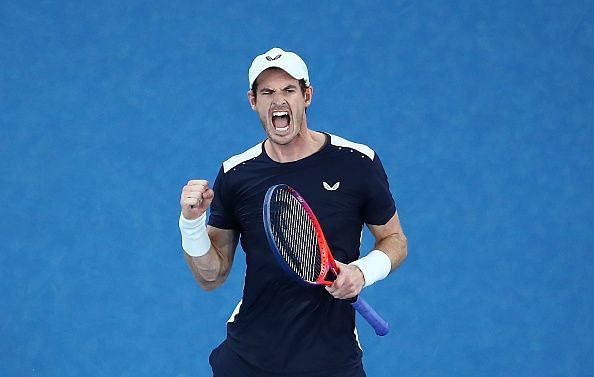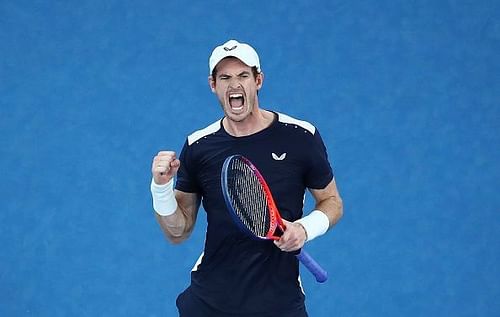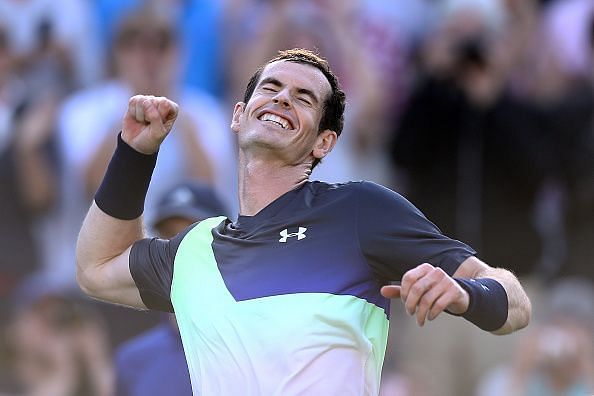
Why Andy Murray needs to carefully plot his potential mid-season comeback
Having had a successful hip resurfacing operation in January following the Australian Open, Britain’s Andy Murray continues to make steps towards his comeback. But assuming Murray does wish to successfully return to the ATP tour, he must decide with his fitness team what the best way to do this is.

The Scot had stated previously that his wish was to return at Wimbledon for a potential farewell appearance. Now however, it seems Murray is having second thoughts.
In any case, Murray should look at the bigger picture and not strain himself to return too soon. The grasscourt season might be his most successful surface, with Queens and Wimbledon among his favourite tournaments, but he must be cautious.
He would have home support which he has thrived on in the past, winning Olympic gold at the London 2012 Olympics and also his first Wimbledon title in 2013. However, both public and media pressure will be high if he were to appear at Wimbledon so soon after having hip surgery.
It would be better for Murray not to pressure himself into playing Wimbledon; instead, he should first see how the hip responds during his training blocks.
It would also be a big risk to suddenly throw himself into the spotlight, that too in the demanding best-of-five set format. He needs to give himself more time in practice and training to space everything out and ensure quality rehabilitation, rather than rushing things and risk the comeback not being productive.
Murray’s performance at the Australian Open against Roberto Bautista Agut, a very good player in his own right, showed that he can still go toe-to-toe with one of the best fighters in the game. Bautista Agut is almost a modern-day David Ferrer in some respects, but Murray stood with him for five sets, albeit in severe agony.
Now that he’s had his operation, assuming he can return pain free, there may be no limit to how well he can play - especially since he would be without the burden of the hip pain.

This must be in Murray's thoughts too. With his intimate knowledge of the game, experience and pure natural tennis ability, he could beat most players in the top 100. It’s only the top 10 players that may be tougher to beat due to their sheer skill and match sharpness.
A post-Wimbledon summer comeback in North America could be a possibility. The beauty of this schedule is that he is accustomed to hardcourts and plays very well on that surface. Murray also trains in Florida so he would be in familiar surroundings.
He may even favour the best-of-three-set format to gradually ease his way back into matches.
If he wants to take the pressure off further, he could decide not to play best of five sets until he's built up his fitness. That would take the US Open off the table, which may seem like a disappointment to his fans, but building his match fitness through training and a number of shorter tournaments seems the most sensible approach.
It would definitely make more sense to return mid-season in August, because then the pressure would be a little less compared to returning in January, at the very beginning of the tennis season. Everyone starts back at square one in January, and Murray is at a completely different stage to his fellow competitors as he’s had a very serious injury.
As ambitious as the man is, he will be desperate to play best of five sets at the Grand Slams, as that is the highest stage the sport has to offer. But this operation may yet save his career, so he needs to temper expectations and gradually make his comeback to the sport instead of diving in at the deep end.
Another possible option to ease his way back into matches would be playing doubles. This would be best of three sets - almost two sets if you consider the third set is a champions tie-break of first to 10. That would be the perfect way for Murray to build up his match fitness.
Murray has shown over the years, especially with the Great Britain team, that he is skilled at doubles too. So if building fitness and getting used to competing again was something he wanted to do, it is a possibility.
Besides, British tennis fans would love to see Andy and Jamie Murray step out together on the lawns of the All England Club and attempt to win the men’s doubles title. That would be unbelievable.
Murray would be keeping a close eye on doubles specialist Bob Bryan, who had the same hip resurfacing operation last year. Bob was able to return to the sport and train after four months, and even won the Miami Masters 1000 with his brother Mike Bryan last month. This shows that if managed correctly, a successful comeback is possible.
It might be doubles instead of singles, but Bob’s recovery would no doubt inspire Murray to see if he can do the same. There are obviously differences in the physical demands of singles and doubles, but Bob was 40 while having that operation and Murray is still only 31.
With Federer still playing at 37, Murray can certainly prolong his career a few more years if he manages his schedule and body appropriately.
All in all, Murray should definitely play it by week and keep assessing his fitness. Unless his gut instinct tells him he’s desperate to play on grass and at Wimbledon, there is no need to put any extra pressure on himself.
However, the smartest option would be to take his time and ease his way back.
If Murray was to commentate again at Wimbledon alongside Tim Henman and Boris Becker, it wouldn’t be the end of the world. He would still have fun, although he wouldn’t be playing on the court.
But by making a potential hard-court North American summer comeback or basing his comeback around best of three sets or doubles, he can ensure that he transitions smoothly back to the sport he has given so much to.